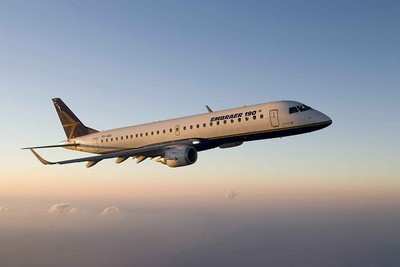Fri, Sep 15, 2017
Transportation Safety Board Of Canada Releases Investigation Final Report
In the release of its investigation report (A16O0066) into a May 2016 in-flight avionics compartment fire, the Transportation Safety Board of Canada found that a fluid contaminant caused the fire that disabled electrical power distribution to several systems of the aircraft.

On 25 May 2016, an Air Canada Embraer ERJ 190-100 was operating as flight ACA361 from Boston/General Edward Lawrence Logan International Airport, Massachusetts, to Toronto/Lester B. Pearson International Airport, Ontario. While en route, warning lights illuminated and associated alarms sounded, alerting the crew that the aircraft was in an electrical emergency condition, and that the main sources of electrical power were offline. The flight crew followed the electrical emergency checklist and after a period of ten minutes, most electrical systems were restored. With main power restored, the aircraft continued to destination and landed uneventfully. No emergency was declared, and no injuries were reported. Air Canada maintenance personnel inspected the aircraft following arrival and noticed extensive fire and smoke damage to the right integrated control center.
The investigation determined that a fluid contaminant had come into contact with the integrated control center and caused arcing, which led to the fire. The fire eventually disabled the main electrical system. As a result of the electrical failure, the smoke detector in the recirculation bay remained unpowered during the period of time when smoke was likely detectable. Due to the lack of smoke or fire warning, the flight crew was unaware of the severity of the situation when it elected to continue to destination. If flight crews are not fully aware of the severity of an emergency situation and exercise their discretion not to land at the nearest suitable airport, then there is an increased risk that a flight may be continued to destination when safer options exist.
Following this occurrence, the manufacturer has proposed changes to its electrical emergency procedure and checklist.
(Source: TSB Canada news release. Image from file. Not incident airplane)
More News
Aero Linx: JAARS Nearly 1.5 billion people, using more than 5,500 languages, do not have a full Bible in their first language. Many of these people live in the most remote parts of>[...]
'Airplane Bounced Twice On The Grass Runway, Resulting In The Nose Wheel Separating From The Airplane...' Analysis: The pilot reported, “upon touchdown, the plane jumped back>[...]
"Burt is best known to the public for his historic designs of SpaceShipOne, Voyager, and GlobalFlyer, but for EAA members and aviation aficionados, his unique concepts began more t>[...]
"Polaris Dawn, the first of the program’s three human spaceflight missions, is targeted to launch to orbit no earlier than summer 2024. During the five-day mission, the crew >[...]
There Are SO Many Ways To Get YOUR Aero-News! It’s been a while since we have reminded everyone about all the ways we offer your daily dose of aviation news on-the-go...so he>[...]
 ANN's Daily Aero-Linx (05.04.24)
ANN's Daily Aero-Linx (05.04.24) NTSB Final Report: Quest Aircraft Co Inc Kodiak 100
NTSB Final Report: Quest Aircraft Co Inc Kodiak 100 Aero-News: Quote of the Day (05.04.24)
Aero-News: Quote of the Day (05.04.24) Aero-News: Quote of the Day (05.05.24)
Aero-News: Quote of the Day (05.05.24) Read/Watch/Listen... ANN Does It All
Read/Watch/Listen... ANN Does It All



